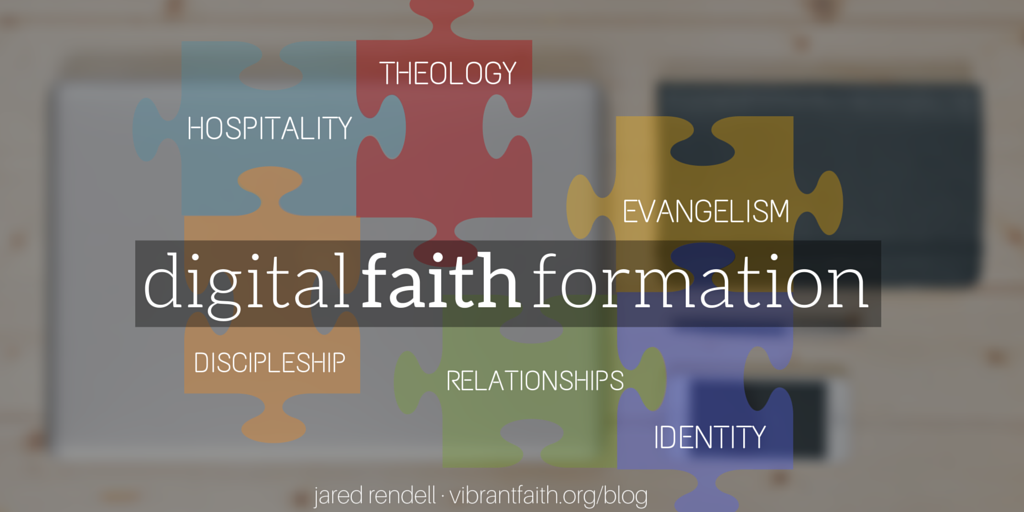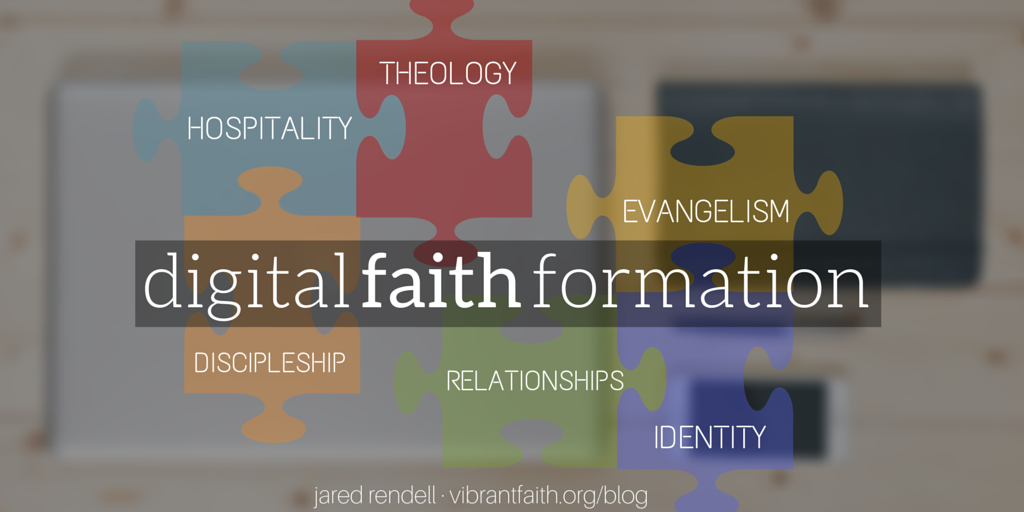[dropcaps]T[/dropcaps]his is a repost of my recent post on the vibrantfaith.org/blog. This is the start of a 6 part series on Digital Faith Formation, the heart of my role as Partner for Digital Strategies at Vibrant Faith. The post is an exploration of the intersection of our super-connected, digital, technological world and the deepest parts of our hearts. While this applies and was written from a faith-focused perspective, its got legs for anyone’s digital strategy. I’d love to hear what you take away via the comments below. Happy reading…

Last year, Vibrant Faith took a journey of organizational self-discovery. Among the things that came out of that journey was the creation of new focus areas, Action Research and Digital Strategies. The people that make up this organization decided that through Action Research we want to continue to discover and learn, and through Digital Strategies we want to welcome the unique connectedness that technology facilitates.
Last week on the Vibrant Faith blog, John Roberto laid out part 6 of a new faith forming ecosystem, digitally-enabled faith formation. In the series ahead, we’ll explore the intersection of 6 key tenants of ministry and our digital world. We’ll talk strategy plus ideas that you can try out in your own ministry context.
 There is a holy shift that is happening in our virtual midst. This is most certainly true with the pace and purpose of digital media in ministry. With our websites, communications, and social media presence, we are moving forward toward something transformative. We need to move past a digital presence that simply informs people of our address, phone number, and worship times. We need to move further past promotion (hoping people will show up in our physical space) and even further past posting content meant to just inspire. Our goal for our digital presence is true, real, everyday faith.
There is a holy shift that is happening in our virtual midst. This is most certainly true with the pace and purpose of digital media in ministry. With our websites, communications, and social media presence, we are moving forward toward something transformative. We need to move past a digital presence that simply informs people of our address, phone number, and worship times. We need to move further past promotion (hoping people will show up in our physical space) and even further past posting content meant to just inspire. Our goal for our digital presence is true, real, everyday faith.
This means we don’t have a website just to have a website. It means that when it’s time for a website refresh, you make sure your designer is aligned with your purposes. We don’t get a Twitter account just because that’s what people do these days. We tweet to stretch ourselves and our ministry to go where people are having the kinds of conversations that shape their thoughts, their values, and their hearts.
We believe churches belong on the frontiers of digital strategy. Why? Because we have an advantage. Churches have been doing for centuries what digital media, especially social media, was created to do. Church is built on two relationships, with God and with each other. These are what we do best. Digital strategy is about relationships.
Jesus replied: “‘Love the Lord your God with all your heart and with all your soul and with all your mind.’ This is the first and greatest commandment. And the second is like it: ‘Love your neighbor as yourself.’ All the Law and the Prophets hang on these two commandments.” – Matthew 22: 37-40
I’ve heard websites and social media spoken of as “tools” we have access to, like a hammer in a toolbox. I get this analogy but it’s not enough. Our view needs to expand. Digital strategy in ministry is an extension of your space, like an addition to your building, a unique front door that you can leave open with 24/7 access to all the value that being part of your community offers.
Digital platforms are not tools to be used, they are spaces to be entered together.  Tweet This
Tweet This
[call_to_action link=”http://wp.me/p5ofFy-2vB” button_label=”Read More” rounded=”false” btnsize=”medium” color=””]
Read the rest @ Vibrant Faith
[/call_to_action]
Thoughts? How does this way of thinking apply to you, your ministry, your organization, or maybe your life? Leave a comment below and let’s dig in more.

